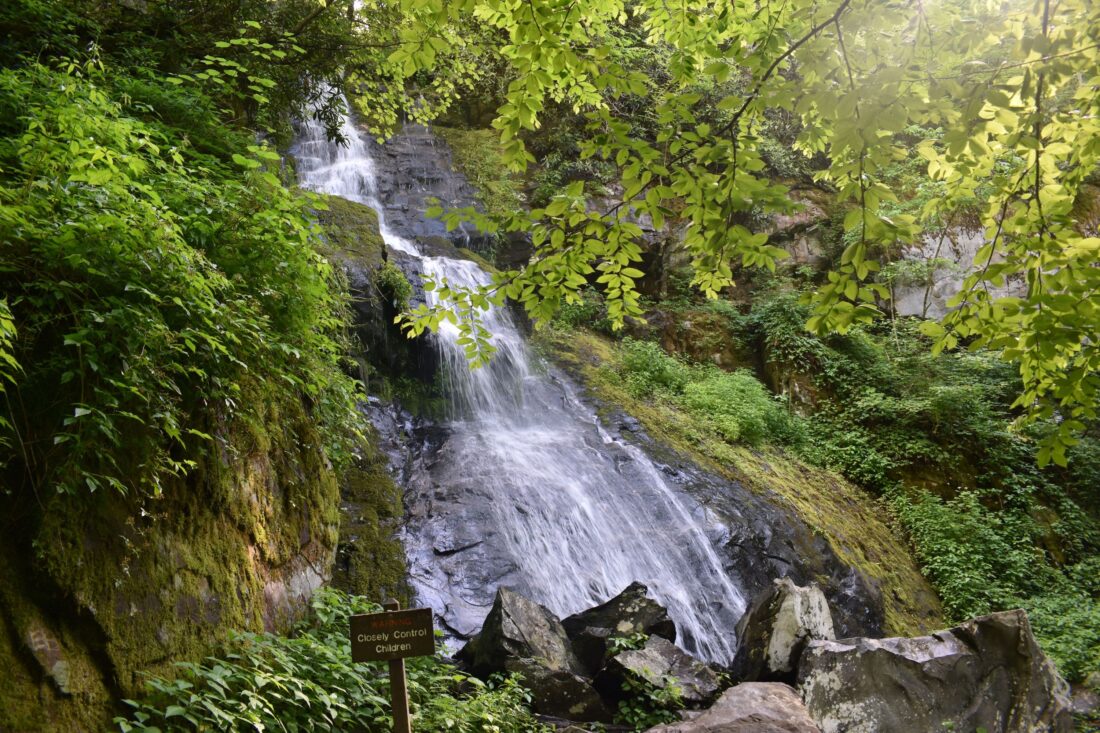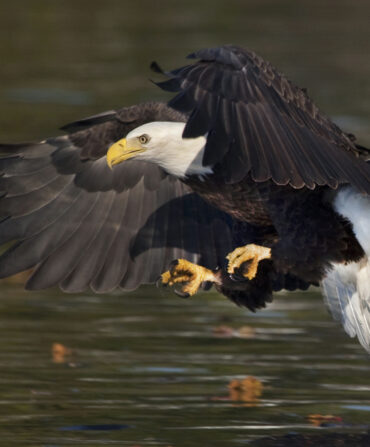“There’s truly something for everyone at Great Smoky Mountains National Park,” says Emily Davis, director of public affairs for the immensely popular Tennessee–North Carolina destination, which sees nearly three times as many visitors annually as the country’s second most-visited national park, the Grand Canyon. In 2023, around one million visitors passed through Great Smoky Mountains National Park in June alone—and again in October. To avoid the worst of the crowds, she says, plan your travel around those busy months. But if your only chance for adventure falls within those windows, don’t hang up your hiking boots just yet. Even during the high season, certain scenic corners of the park remain quiet, low-traffic escapes—if you only know where to look.

But first—a reminder to hike smart: Accidents can happen on even the easiest trails. “Two things I always hike with are a little pocketknife and a roll of duct tape,” Davis says. “Extra duct tape can repair pretty much anything.” She also recommends checking out the National Park Service’s list of Ten Essentials, which includes basics like snacks and plenty of water along with paper maps (you shouldn’t rely on cell service or the battery life of your phone in the park). “Stopping into one of the park’s visitor centers or backcountry offices is also a must,” she says. You’ll get current trail and safety info, but you can also talk personally with rangers, who can offer individualized suggestions for hikes.
And remember, Great Smoky Mountain National Park is black bear country, so educating yourself on what to do if you encounter one as well as carrying bear spray (and knowing how to use it) should be standard practice if you’re hiking anywhere in the park, which is home to an estimated 1,900 bears (or approximately two bears per square mile). Though generally wary of humans, black bears are wild animals, and their behavior can be unpredictable, so treat any encounter with extreme caution.
Visit the NPS website for a crash course in bear safety before you hike.
Get Off the Beaten Path
Baxter Creek Trail to Mount Sterling
Distance: 12.4 miles round trip, out-and-back
Difficulty: Strenuous
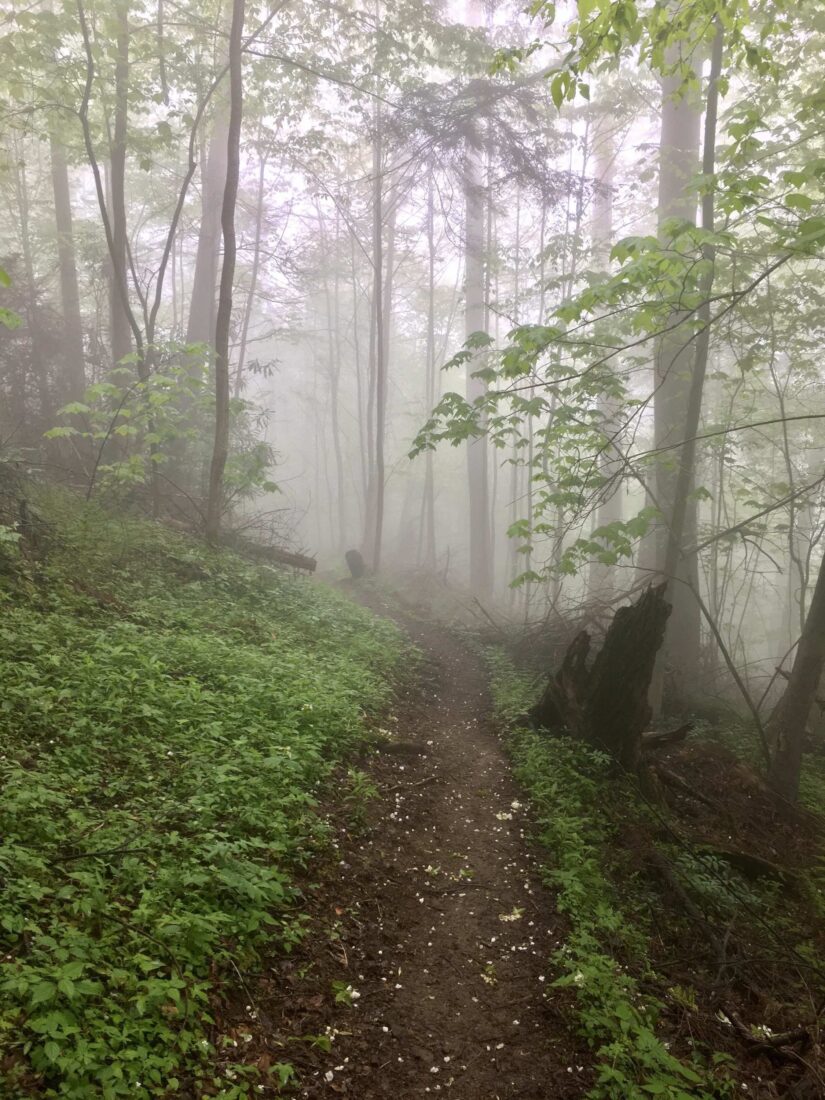
“Baxter Creek Trail is probably one of the toughest climbs in the park,” says Marielle DeJong of Friends of the Smokies—and she would know. DeJong is a member of the park’s 900 Miler Club, meaning she has hiked every trail in the park. It’s this wooded path’s high degree of difficulty—you gain 4,200 feet in just 6.2 miles—that keeps it out of reach for most casual visitors, but if you’re an experienced hiker, the effort delivers one of the park’s biggest payoffs. Ascending through lush sections of old-growth forest, you’ll spot towering tree specimens, including a 177-foot champion tulip tree, and if your thighs aren’t screaming by the time you reach the summit, you can trek to the top of the historic Mount Sterling fire tower for sweeping 360-degree views. The round-trip hike begins at the Big Creek Campground and takes seven to nine hours to complete, so start early and pack plenty of snacks and water, says Brittany Mendez of Hiking in the Smokies, a comprehensive online guide to area hikes.
Enloe Creek Trail
Distance: 6.5 miles round trip, out-and-back
Difficulty: Strenuous
The remote Enloe Creek Trail is hidden near Cherokee, North Carolina, in one of the park’s most scenic watersheds, an area that remained largely untouched by logging companies before it received national park protection. It’s recommended for experienced hikers, as it requires a grueling 1.9-mile climb (via the Hyatt Ridge Trail) just to reach the trailhead—meaning you’ll likely have it to yourself once you get there. The trail passes directly through Enloe Creek Backcountry Campsite #47, making it a great option if you are looking for an overnight trip as opposed to a day hike. There’s plenty to do to justify staying longer, especially for anglers looking to test their skills on a rugged Smoky Mountain stream.
Gabes Mountain Trail to Hen Wallow Falls
Distance: 4.4 miles round trip, out-and-back
Difficulty: Moderate

Some of the park’s most popular hikes lead to waterfalls, and well-loved spots like Laurel Falls near Gatlinburg are often choked with visitors. To avoid the crush, both Davis and Jim Matheny with Friends of the Smokies suggest taking Gabes Mountain Trail to Hen Wallow Falls instead. The 4.4-mile hike begins near the Cosby picnic area, and as you wind your way through a quiet stretch of hemlock and rhododendron forest—minding some roots and rocks along the natural path—you might find that the trip flies. The ninety-foot cascade is marked by a wooden signpost and accessed via a steep side trail, so sturdy hiking shoes are strongly recommended. Look carefully, Davis says, and you might be able to spot some of the famous Smoky Mountain salamanders at the waterfall’s base.
Hemphill Bald from Polls Gap
Distance: 9.6 miles round trip, out-and-back
Difficulty: Moderate to strenuous
For both Matheny and DeJong, the hike to Hemphill Bald is one of the park’s true hidden gems. This remote, high-elevation trail, which skirts the eastern boundary of the park and is accessed via the Polls Gap parking area on Balsam Mountain Road, is rarely crowded, even during the park’s busiest summer months. “We didn’t run into any other people when we hiked it last July,” Matheny says. Though there’s only five hundred feet of elevation gain, the terrain’s rolling nature makes it feel like a good bit more; the reward is loads of wildflowers and showstopping views of the surrounding peaks. (If you’re visiting in the off season, be sure to check with the park before setting out, as high-elevation hikes tend to open late and close early.) It’s a full-day hike, so pack lunch, and depending on your group’s energy levels, stop off for a picnic near the recently revamped Cataloochee Ranch, a historic cattle ranch and lodge turned family-run resort, or push on to the summit of Hemphill Bald.
Kephart Prong Trail
Distance: 4.0 miles round trip, out-and-back
Difficulty: Moderate
“This is a fun one with kids because there are four log bridges that you get to traverse to cross the creek,” Davis says. And although there are no dramatic mountain views or plunging waterfalls, there’s a unique Smoky Mountain magic at play along this densely wooded hike, which dips and climbs along the banks of clear rocky streams. Not even a quarter of a mile from the trailhead (which is accessed via a small pull-off five miles north of the Smokemont Campground on Newfoundland Gap Road), you’ll find the Depression-era remnants of an old Civilian Conservation Corps camp. The men who lived and worked here helped build much of the trail as well as its footbridges, which still display their original stonework. After exploring these relics, most folks continue to the historic Kephart Shelter, located at the 2.0-mile mark, before turning around.
Little River Trail to Cucumber Gap
Distance: 5.0 miles round trip, loop
Difficulty: Easy to moderate
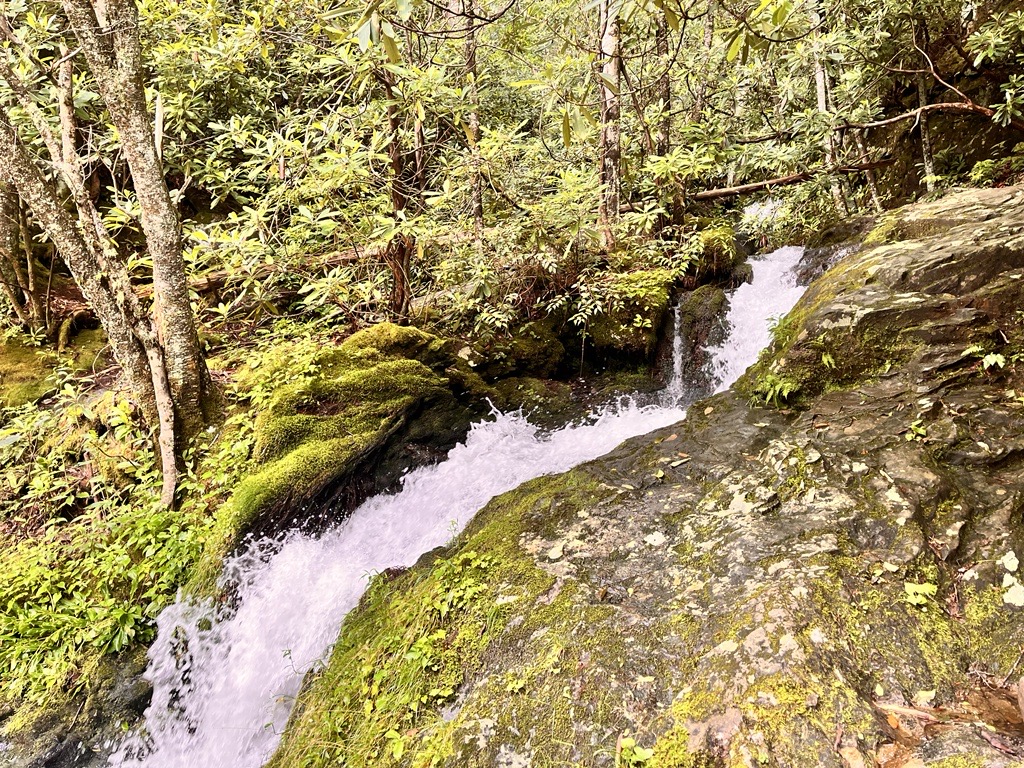
The first 2.2 miles of the Little River Trail, which begins near the Elkmont Campground and snakes along the verdant banks of the Little River, are a relatively easy walk in the woods, making this another popular spot for families and novice hikers. There’s a little something for everyone here, including seasonal wildflowers, fishing opportunities, and historic structures (among them a cluster of abandoned resort cottages that predate the park). Most folks turn back at Huskey Branch Falls, a twenty-foot cascade located alongside the trail at the 2.2-mile mark, but Davis advises extending your hike down a less traveled, slightly more difficult loop. “Little River will connect you to another trail called Cucumber Gap, which then connects you to Jake’s Creek and back,” she says. “It’s about a 5.5-mile loop, and it’s a lot quieter out there. I hiked it a month ago and only saw one other family.”
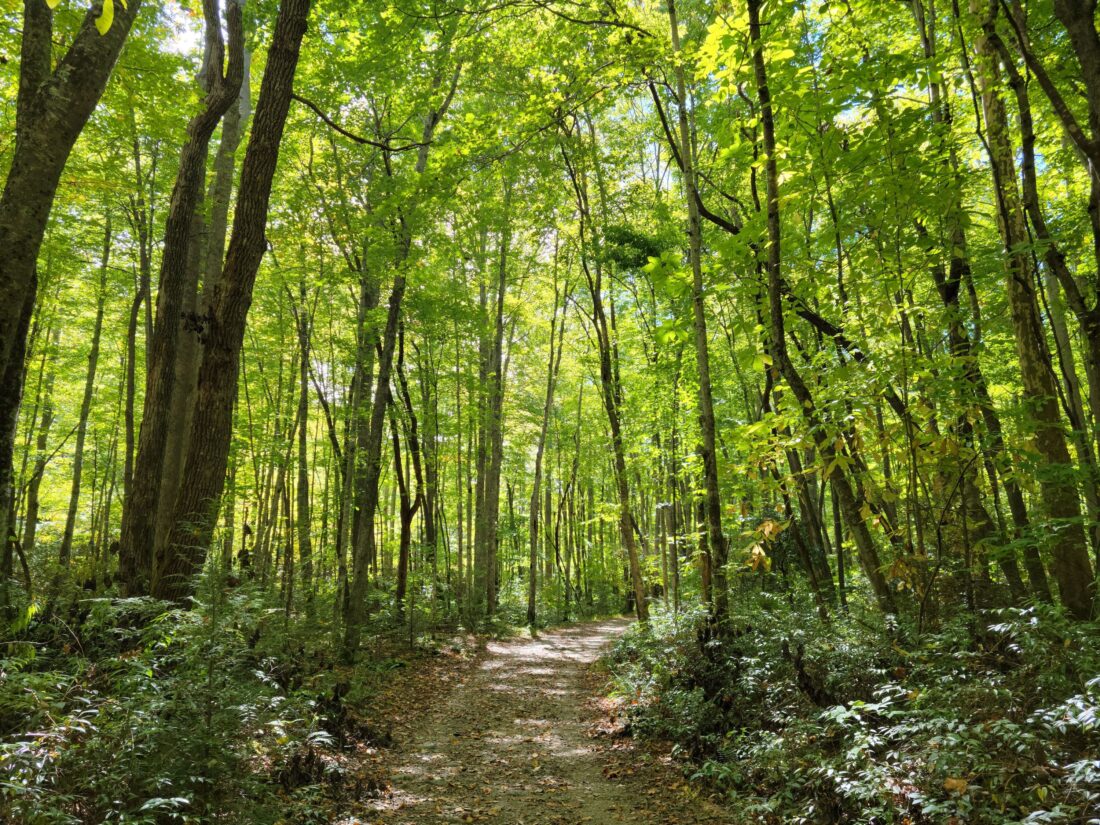
Middle Prong Trail to Indian Flats Falls
Distance: 7.8 miles round trip, out-and-back
Difficulty: Moderate
If you like tumbling rivers, meandering creeks, and cascading waterfalls, the Middle Prong Trail to Indian Flats Falls is the hike for you. An old logging road in the popular Cades Cove area, the wide, wooded trail is shaded most of the way, and with a steady, gradual incline, it presents a manageable challenge for a range of skill levels. The hike is particularly picturesque in April, when wildflowers carpet the forest floor, and again in October, when the woods are alight with fall color. Pro tip: The 100-yard trail to Indian Flats Falls isn’t clearly marked, so as you approach mile four, begin looking for a large rock along the right side of the trail, which indicates you’ve arrived at your destination. If your timetable (or group ability) doesn’t allow for the full round-trip hike to Indian Flats, follow Middle Prong to Lynn Camp Prong Falls, which sits approximately six tenths of a mile from the trailhead.


